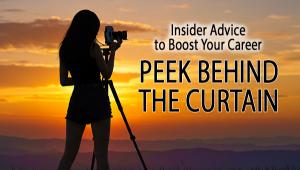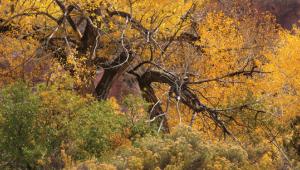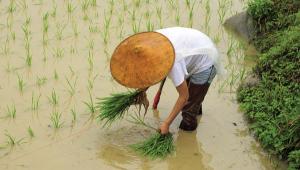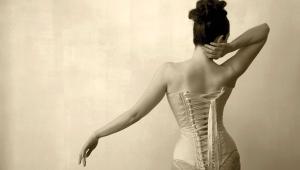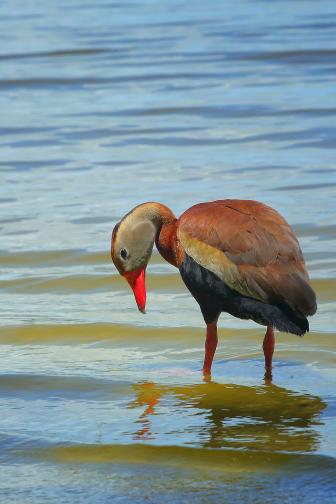An Interview With Eric Meola; Passion, Belief, & Risk
 As
a young photographer, Eric Meola's first job after college was assisting
Pete Turner. He got the job through the same passionate perseverance that has
driven him in countless successful assignments. It helped him create a unique
visual style that has carried throughout his entire career.
As
a young photographer, Eric Meola's first job after college was assisting
Pete Turner. He got the job through the same passionate perseverance that has
driven him in countless successful assignments. It helped him create a unique
visual style that has carried throughout his entire career.
Shutterbug: After about 18 months of assisting Pete Turner
you opened your own studio. You did editorial work for Life, Travel & Leisure,
Esquire, and Time.
That's big-time stuff for a new guy competing with really established
experienced photographers.
Eric Meola: (laughs) It didn't happen that quickly. The
way things worked with Pete was that he felt that after about one to two years
you would learn what you were going to learn and it started to get a little
stale for both people. I think he was correct in that regard and we started
to get a little too used to each other. It's always good to have someone
new. So I left and struggled for five or six years with odd assignments. My
first lucky break was when I went to Haiti for Time magazine in 1972 and did
the Coca-Cola kid shot, which started to put me on the map.
Coca-Cola Kid |
 |
SB: Tell us about the process, the way you approached the
assignments. How did you formulate your work?
EM: I think one of the things that went through my mind was
I should work my butt off night and day. I wouldn't force the images,
but it was very important to me that someone was taking a risk hiring me and
that I had to do a good job because I wasn't ever going to get that opportunity
again. It's always important to do your best, but it's especially
important on those early assignments because they can lead to the breaks that
can really help you. Photography for me is a passion, not a job. Once it becomes
just a job you've lost sight of why you originally became a photographer.
It was obvious to me early on that if I took the attitude of hey, I got the
job and that's it, I wouldn't have gotten anywhere. When I was in
Haiti I worked night and day. I didn't stop just because the sun went
down. I would still go out with a tripod or I'd be up before the crack
of dawn. That's the way I treated all my assignments.
SB: What really helped you to hone your vision and create the
great images that we see today?
EM: I think probably it was shooting a lot, experimenting a
lot. But ultimately it comes back down to your eye. I was trying to make images
that would stop people as they turned the page, whether it was through the use
of color or graphics or the subject matter. I was trying to make bold images
that made people stop and ask who took that picture. I was trying to get my
name around literally through the graphic style and use of color, and I guess
it worked.
Becoming Buddha |
 |
SB: Some of your early photographs are in your recent book
Last Places on Earth. It seems that the seeds of that book started very early
in your career. Was that always something that you had in the back of your mind,
or did you conceive of it later?
EM: I think I did have it in the back of my mind; it's
just that I didn't realize it. I was always interested in icons and in
the way that one culture had insinuated itself into another culture.
SB: When you are photographing people in a foreign land and
dealing with a completely different culture, how do you manage to connect with
them so effectively? How do you manage to put the viewer in touch with your
subject and create rapport when the context is so different?
EM: I think, like most photographers, I was intimidated by
going to some of these exotic places because when you start to point your camera
at someone you feel guilty right away. Then they shy away or they say no, or
they raise their hand. You don't know if you should switch to a telephoto
lens, try to sneak the picture or not even shoot at all.
When I went to Burma on a personal assignment I went through a sort of spiritual
transformation. I came across this little boy getting his head shaved in the
ceremony called Becoming Buddha at the Schwe Dagon Pagoda in downtown Rangoon,
and it was one of the most incredible things that I have ever seen in my life.
Photographing him, getting that image, changed me both spiritually and the way
I, as a photographer, saw things visually. I'm not sure that I can really
explain how this all happened, but from that point on I just was empowered to
walk into those situations and make images. Nothing intimidated me, I didn't
try to steal the images, I didn't try to force my way into these situations.
I was very aware of the personal space of the people that I was photographing,
the culture where I was, and the religion. I respected that, and yet somehow
I had been given this key to walk into these situations and make these images.
It just was all transforming, and it started with being able to photograph that
little boy in Burma.
SB: That's a remarkable story. It sounds like your epiphany
blessed you with an understanding and a confidence that attuned you to your
subjects. One of the powerful visual techniques you used in a number of images
in the Last Places on Earth was strongly colored negative space. Many photographers
use selective focus to isolate their subjects, but typically such out-of-focus
backgrounds are muted. You seem to be drawn to intensely saturated backgrounds.
Can you tell us a bit about that? Do you look for those possibilities as you
create images or is it unconscious?
EM: It is unconscious. I let the subject or whatever it is
that I'm seeing dictate what happens.
In the pictures in the book the color ranges from the primary colors that are
from the early part of my career to much more muted tones and the strong use
of browns and maroons. I knew I was changing when I was working on the book
and I was allowing that change to happen. I was shooting in a style that was
very different from my early work.
My early work tended to be very carefully thought out and I would not work around
the subject shooting a lot. But when I got to Burma I couldn't stop shooting.
I literally shot 5000 photographs in four or five days. I was shooting day and
night, shooting very rapidly, not thinking about anything technical from the
standpoint of my early images. In shooting my early images, I always thought
about things that were technical. I always looked at the exposure. You could
ask me 10 years later what shutter speed I shot a particular image with and
I could tell you.
Here I was sort of subliminally aware of the technique. I was using aperture
priority. I was aware of the shutter speeds and the f/stops in the viewfinder,
but not really thinking about them. If it was five stops under what you could
normally shoot with the f/stop and shutter speed combination, I didn't
care. If I was shooting at a 1/15 sec handheld with a 300mm lens, I didn't
care. It really came down to, hey it might work or it might not, but it's
interesting. I know there is not enough light but I'm still going to shoot
it. Whereas before I would have said to myself, I can't shoot in this
situation so I wouldn't try.
